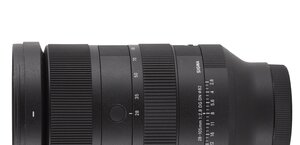Sigma 70-200 mm f/2.8 II EX APO DG Macro HSM
1. Introduction
Lenses of the 70-200 mm class with constant brightness of f/2.8 are classical equipment of professional reporters. It’s no wonder, then, that it’s quite a prestigious category and every optics producer tries to have in this class a high quality product.
Tests of lenses like Canon EF 70-200 f/2.8L USM, Canon EF 70-200 f/2.8L IS USM or Nikon AF-S 70-200 mm f/2.8 VR show that the best don’t stint of anything and we get instruments of really top class, hence in prices exceeding the ceiling of 1800 $.
Please Support UsIf you enjoy our reviews and articles, and you want us to continue our work please, support our website by donating through PayPal. The funds are going to be used for paying our editorial team, renting servers, and equipping our testing studio; only that way we will be able to continue providing you interesting content for free. |
- - - - - - - - - - - - - - - - - - - - - - - - - - - - - - - - - - - - - - - - - - - - - - - -
Whoever can’t afford an expense like that, can always look at the independent producers’ offer. So far, Sigma has been at the forefront here, offering an already tested by us model Sigma 70-200 mm f/2.8 EX DG APO HSM Macro. It couldn’t match the best products of Nikon and Canon, being worse at 200 mm focal length and giving larger chromatic aberration, but it cost twice less.
Recently the situation’s undergone another improvement. Tamron’s announced the appearance of a new 70-200 mm f/2.8 class lens, Sigma responded with II version of its 70-200 mm and simultaneously a price war began, which led the prices of both these products to the level of around 750 $.
When Sigma announced the appearance of the new version of 70-200 mm f/2.8 lens, at first glance it was no use to find changes between the predecessor. Weight, dimensions, look, number of groups and elements – it was all the same or very similar to the predecessor. When you go deeper into the specification it turns out that Sigma’s gained one ELD low-dispersion element. How much it’s helped reach better results we’ll find out reading the further chapters.
The lens was lent for tests by K-Consult.
Information about our review method can be read in our article “How do we test lenses?"
 |







